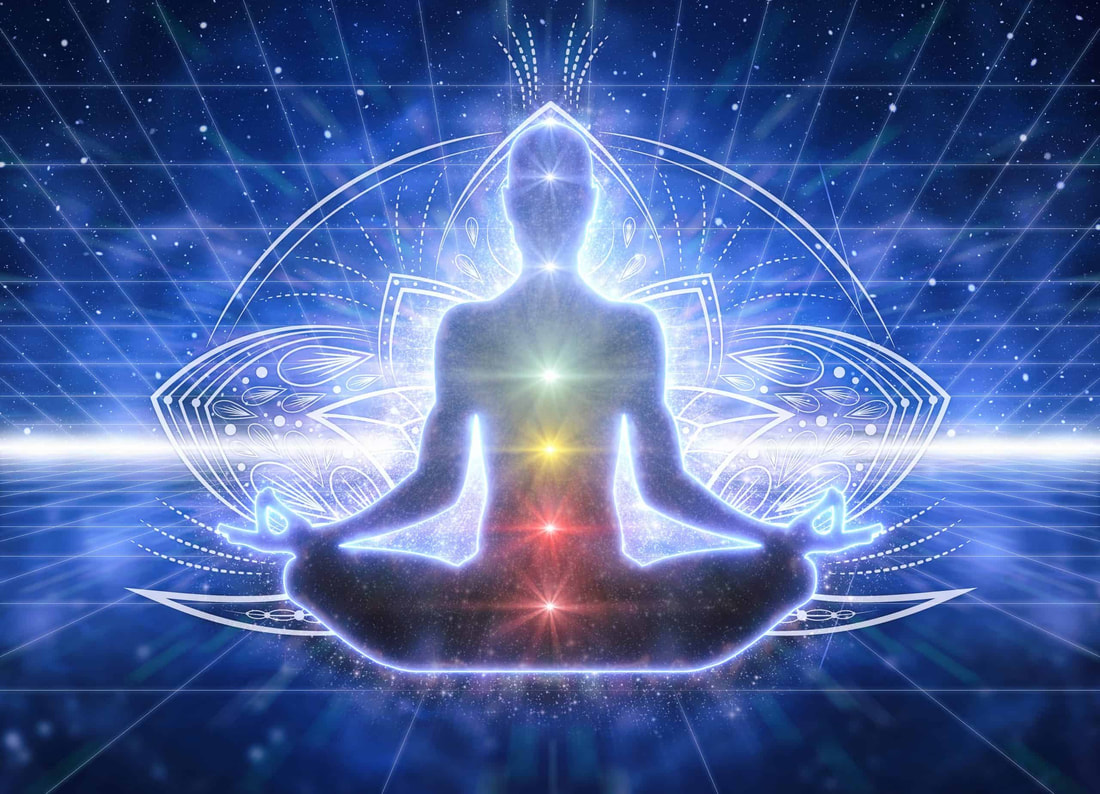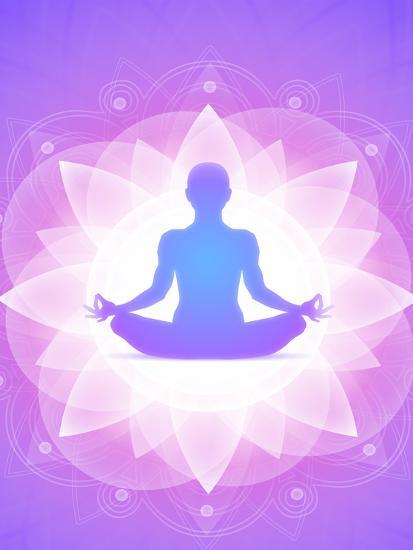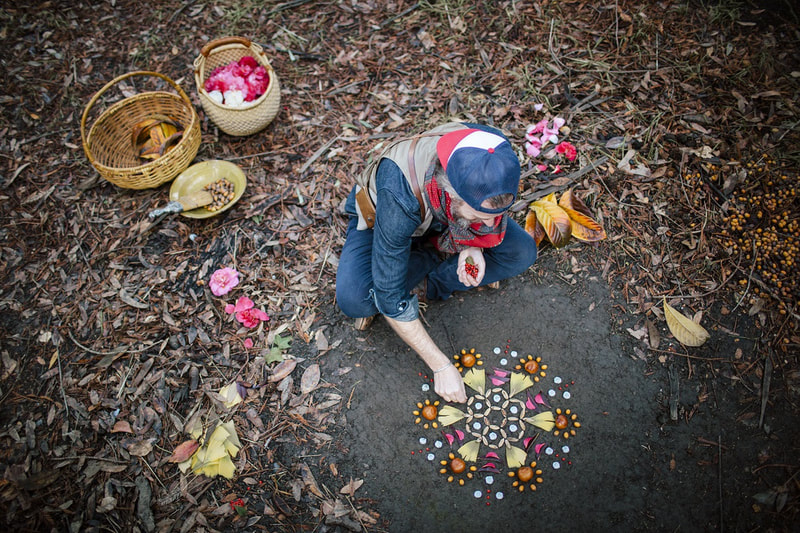|
Happy Monday Wildcats Artists! We had some crazy weekend weather! Hopefully we are back on track to a beautiful Berkshire spring! If you haven't emailed me your Contour Food Drawings or Earth Day Environmental Art Sculptures please do so this week - I would like to post of all your creations on our Art Blog so we can share what everyone is up to. In the meantime let's revisit what we did last Monday! Meditation is a simple practice available to all, which can reduce stress, increase calmness and clarity and promote happiness. Learning how to meditate is straightforward, and the benefits can come quickly. When we meditate, we inject far-reaching and long-lasting benefits into our lives: We lower our stress levels, we get to know our pain, we connect better, we improve our focus, and we're kinder to ourselves. Following up on last ART MISSION MODAY’S post I am going to provide you with basic tips to get you started on a path toward greater equanimity, acceptance and joy. This is a continuation from last week so I am asking you to practice and read through the instructions towards the bottom of this post carefully and don't hesitate to contact me if you have questions or require clarification. Take a deep breath and get ready to relax... WHY PRACTICE IS SO IMPORTANTA “practice” in the broad sense of the term is simply an activity that you repeat regularly. Sometimes we repeat activities consciously, e.g. “I practice swimming five times a week.” But you also might practice some activities unconsciously: is eating a conscious practice for you? Walking? Drawing? Cooking? Reading? Painting? Video games? Gardening? Football? Knitting? Lacrosse? You are practicing all the time, whether you know it or not. That’s why practice is so important. Even when you’re not actively doing an activity, your brain is still absorbing and learning. Just think about those times you took a few days off from something and suddenly got better. You’re always learning, even in your downtime. So, you might as well make the most of your time and practice effectively. Mindfulness: the psychological process of purposely bringing one's attention to experiences occurring in the present moment without judgment, which one develops through the practice of meditation and through other training. A mental state achieved by focusing one's awareness on the present moment, while calmly acknowledging and accepting one's feelings, thoughts, and bodily sensations, used as a therapeutic technique. We “practice” mindfulness so we can learn how to recognize when our minds are doing their normal everyday acrobatics, and maybe take a pause from that for just a little while so we can choose what we’d like to focus on. Setting aside time for formal meditation is an important way to establish a routine and get comfortable with the practice. Even just a few minutes a day can make a big difference. Practice is the act of rehearsing a behavior over and over for the absorption, improvement, mastery and maintenance of skills. WHY LEARN TO MEDITATE When we meditate, we inject far-reaching and long-lasting benefits into our lives. And bonus: you don’t need any extra gear or an expensive membership. Here are five reasons to meditate: 1: Understand your pain 2: Lower your stress 3: Connect better 4: Improve focus 5: Reduce brain chatter 12 Science-Based Benefits of Meditation Meditation: A simple, fast way to reduce stressHOW TO MEDITATE FOR BEGINNERSThe first thing to clarify: What we’re doing here is aiming for mindfulness and visualization - not some process that magically wipes your mind clear of the countless and endless thoughts that erupt and ping constantly in our brains. We’re just practicing bringing our attention to our breath, and then back to the breath when we notice our attention has wandered. Get comfortable and prepare to sit still for a few minutes. After you are finished reading this post, you’re going to revisit the Color Healing Guided Meditation from Monday and do it again. You can practice mindfulness meditation on your own anytime and anywhere. But listening to basic guided meditations can also be helpful, especially when getting started. Meditation is simpler (and harder) than most people think. 1) Take a seat or lie comfortably and close your eyes Find a place that feels calm and quiet to you = make sure you’re somewhere where you can relax into this process. 2) Set a time limit (ours is set for us on the guided mediation) If you’re just beginning and want to practice on your own outside of our guided meditation it can help to choose a short time, such as five or 10 minutes if sitting quietly or use a guided meditation to keep you focused. 3) Notice your body You can sit in a chair with your feet on the floor, you can sit loosely cross-legged, you can kneel, you may lay down—all are fine. Just make sure you are stable and in a position that you can stay in for a while. 4) Close your eyes and feel your breath Follow the sensation of your breath as it goes in and as it goes out. Focus your attention on the breath and on how the body moves with each inhalation and exhalation. Notice the movement of your body as you breathe. Observe your chest, shoulders, rib cage, and belly. Focus on your breath. Where do you feel your breath most? In your belly? In your nose? Try to keep your attention on your inhale and exhale. Follow your breath. Take a deep inhale, expanding your belly, and then exhale slowly, elongating the out-breath as your belly contracts. Simply focus your attention on your breath without controlling its pace or intensity. If your mind wanders, return your focus back to your breath. 5) Notice when your mind has wandered Inevitably, your attention will leave the breath and wander to other places. When you get around to noticing that your mind has wandered—in a few seconds, a minute, five minutes—simply return your attention to the breath or listen to the voice on the guided meditation. 6) Be kind to your wandering mind Don’t judge yourself or obsess over the content of the thoughts you find yourself lost in. Just come back. 7) Close with kindness When you’re ready, gently lift your gaze (if your eyes are closed, open them). Take a moment and notice any sounds in the environment. Notice how your body feels right now. Notice your thoughts and emotions. That’s it! That’s the practice. You go away, you come back, and you try to do it as kindly as possible. DON'T FORGER THE COLOR THERAPY + CHAKRA MEANINGS!ASSIGNMENTS + VIDEO 1. Read through the text of this post and revisit the Color Therapy Altar + Guided Meditation from April 30th if you need to. Navigate between posts by using the "previous" button on the bottom left of this post - all the way at the end of this page. 2. Watch the video – my recommendation is to sit or lay down in a dimly lit room. Get super comfy and use a speaker or headphones so you get the best sound quality. Close your eyes and listen and focus on the words and visualize the prompts throughout the video. 3. If you haven’t already answered the questions from last week - do so using the video, your visualizations during the mediation and the text in this post 4. Add to the color healing altar or shrine you have already built or make a new one if you want – see below for details - take a picture to email [email protected] 5. During your second meditation notice if anything has changed: - Are you visualizing the same things for each color? - Is a new color speaking to you? - Are you getting more comfortable with the process? These are questions to ask yourself - you do not need to email me the answers unless you want to share. Color altars - shrines - special still life collection examples:ACTIVITY/PROJECT – create an altar or shrine of the colors that spoke to you most with objects from around your home. Through the days and weeks use this “sacred/special” space to rest, relax and recharge. Use it as a quiet space to contemplate and gain balance. You can use any types of objects as long as they are school appropriate - there are some examples below - it can be color specific, nature oriented, organic, stones, figurines, flowers, keepsakes, man-made, newspaper or magazine clippings, mementos, photos, books, your favorite items from around your room/home just make sure its meaningful to you! DURING THE MEDITATION: DIRECTIONS + QUESTIONS Dedicate 25 minutes to listening. Exercise mindful listening = without judgment, criticism or interruption, while being aware of internal thoughts and reactions. Create pictures in your mind from the prompts the speaker gives you. AFTER YOU FINISH the meditation write down the answers to these questions: 1. What did you imagine for each color? You can have more than one answer! Red – Orange – Yellow – Green – Blue – Violet – 2. What color did you enjoy imagining the most? What color do you feel drawn to? What color(s) do you feel you need right now? (kind of all the same questions just asked in different ways) 3. Tell me about your meditation experience and/or if you have a regular practice! There are no wrong answers! DUE DATE If you haven't already please submit answers and image to me via Google Classroom or email by Sunday May 17th 12/midnight - or if you want to update me on your progress/practice I would love to hear about it! Remember to go through the list of assignments I have posted below and make sure you aren’t missing anything! Have a most magical week my artists and I will talk to you soon – please contact with any questions or if I can help in any way - I am available through email, over the phone and via virtual meet up. REMEMBER to have fun with these assignments and enlist the help of people you live with! Thinking of you always, Nicole Webster Clark COLOR THERAPY GUIDED MEDITATION POSTS + ASSIGNMENTS SO FAR 4/5 Hello + Welcome: Introduction, Syllabus etc.
4/6 Monday Art Mission: Still Life Self Portrait 4/8 Wednesday Watch: Prehistoric Stone Age Art 4/10 Fragment + Fortify Friday: Norman Rockwell 4/13 Monday Art Mission: Color Theory w/ Color Wheel Still Life or Color Wheel Collage 4/15 Wednesday Watch: Medieval Illuminations 4/17 Fragment + Fortify Friday: The Dark Crystal 4/20 Monday Art Mission: Contour Drawings + Google Pictionary 4/22 Wednesday Watch: Earth Day + Environmental Art 4/24 Fragment + Fortify Friday: COVID19-Themed Murals + Graffiti Related To Coronavirus 4/27 Monday Art Mission: Review + Catch Up 4/30 Wednesday Watch: Gothic Architecture 5/1 Fragment + Fortify Friday: May Day + The RGB Colorspace Atlas 5/4 Monday Art Mission: Color Therapy Altar + Guided Meditation 5/6 Wednesday Watch: Elements of Art Questions 5/8 Fragment + Fortify Friday: The Story of Flowers 5/11 Monday Art Mission: Meditation Practice
0 Comments
|
Nicole
|
















 RSS Feed
RSS Feed